Ertach Kernow - Caradon Hill boom & bust
Caradon Hill and its 19th century copper discovery was a late comer to Cornwall's mining story. St Piran is associated with tin as the patron saint of tin miners, and Cornwall primarily with tin back to the Bronze Age. Cornwall is blessed with having fifteen percent of the worlds minerals by type and of course today one which is coming to the fore lithium. Looking to the Caradon region of Cornwall, Liskeard had grown from a small village at the time of Domesday when it was known as Liscarret, to a small town in 1240 when Richard Earl of Cornwall granted it a charter. There had been a degree of tin streaming on nearby Bodmin Moor since early times, but it was through its growth as a market town that enabled it to grow further becoming prosperous and during the medieval period a Stannary town.
All was well and good, and Liskeard prospered into the 19th century with a canal between Liskeard and Looe opening in 1827 which was finally completed in 1830. This was used to transport farm produce and granite from quarried on Bodmin Moor to the coast. A boom in Liskeard’s fortunes took place in 1836 when large reserves of copper were discovered leading to the construction of the Liskeard and Caradon Railway in 1846. This expanded further in 1860 with the opening of the Liskeard to Looe railway line, albeit to the detriment of the canal.
The area that formed the basis for the Caradon copper boom is situated in the south-eastern corner of the moor, north of the historic village of St Cleer. Less than three miles north of Liskeard, St Cleer gives its name to this sizeable parish of many smaller hamlets and villages. Traditionally this granite rich area had known quarrying and upland sheep farming with the medieval shallow surface tin mining and streaming generally worked out by the 18th century. In 1836 the Cornwall Great United Mining Association, a London based company who already had interests in west Cornwall, took in a number of existing setts and amalgamated them. This included Old Stowes, Wheal Julia, Wheal Jenkin, Wheal Prosper and Greenhills, with tin extraction being the primary aim of this mining enterprise. It then became known as the Phoenix and South Phoenix mines and later due to discovery of large lodes of copper, this was also produced throughout its mines.
By the 18th century with the invention of steam pumping engines allowing for improved water extraction, mining in Cornwall was able to reach greater depths. The production of copper gradually overtook that of tin as demand for it grew to unprecedented levels. Today copper is used primarily in wiring, electrical and industrial equipment and plumbing but during the 18th century use of copper in Britain was driven the Admiralty applying it to copper sheath all the Royal Navy vessels. The first to undergo this process in 1761 was HMS Alarm a 32-gun frigate. The Admiralty had discovered the advantages of speed and maintenance in sheathing vessels below the waterline and also the use of a copper and zinc alloy to replace iron bolts making them more corrosion-resistant. By 1782 eighty-two ships of the line and some two hundred and seventeen other vessels comprising frigates, sloops and cutters had been coppered. So much so that the demand was outstripping Cornish mining output. During the Napoleonic War this gave the Royal Navy a huge advantage but also pushed the price of copper up from about £78 per ton in 1785 to some £200 per ton in 1807. This however was a double-edged sword, high prices would lead to mining exploration and development abroad, ultimately adding to the demise of Cornish copper mining.
In the first half of the 19th century those dismal days were still in the future and coppers glory days were still to come. Around 1833, a mining captain Peter Clymo and his brother James together with Thomas Kitto had begun prospecting southwest of Caradon Hill. Their adit had driven some 300 feet when indications of copper were found. With their financial resources drying up they borrowed money from a small Quaker bank and in 1836 struck the main copper load. That was the beginning of the Caradon Hill copper boom that would last for several decades. The South Caradon mine as it became known was subject to the Stannaries’ Act and a company created with paid up share capital of £640 was set up. This was a huge success, and some 217,000 tones of ore was extracted from this mine alone with shafts descending twelve hundred feet. The area as a whole produced 625,000 tons and was for fifty years the third largest copper producer in Cornwall and the west of England.
Making up this area of mining at Caradon and surrounding district were a number of other mining enterprises encouraged by the success of the South Caradon Mine. Some were small affairs and made little or no profit, other smaller mining enterprises lasted a short period but were highly profitable. The former included the Caradon Copper Mine, later being renamed the Trethevy Copper Mine, this was not a great success. Reports state in 1851 that the lode at thirty fathoms was 3 feet wide containing spots of copper ore at forty fathoms it was better but at forty eight fathoms hit hard Hornblende rock caused mining to cease. St Cleer Consuls was another aborted project in the 1840’s. To the southern boundary of St Cleer Consuls was Wheal Venland opened in 1844 producing some fine copper ore, similar to that at South Caradon. Excitement caused the share price to soar but typical of many small enterprises it was not ultimately a success and closed soon after with large losses. Numerous mines were commenced during the 1840’s many with limited success or abandoned soon after with losses.
Perhaps one of the lasting legacies beyond the remnants of the derelict engine houses are some of the small hamlets that came into being during the Caradon copper boom. Many of the older mines in the west of Cornwall were declining as mining became unprofitable with the need to drive deeper to find lodes or through total mineral exhaustion. Miners began to move into the Caradon area leading to the creation of new settlements around the mines such as Caradon Town, Darley, Henwood, Higher Tremar and Darite, originally known as Railway Terrace as the Liskeard and Caradon Mineral Railway ran alongside its main street. Perhaps better known today as a place to visit the Hurlers and the Cheesewring, Minions was also one of the new villages created around that time. Existing villages saw a growth in population including St Cleer, Linkinhorne, South Hill, Pensilva and Upton Cross. South of the mining area Liskeard benefited and saw its population rise to a peak of 6,500 before dropping back to around 4,000 during the first half of the 20th century. This period did see some wonderful buildings constructed, forming an important part of Liskeard’s historic structural heritage today, something the town can rightly be proud of.
As in all economic cycles boom usually leads to bust and so it was with Cornwall’s 19th century copper industry, including the Caradon region. During the 1850’s and 1860’s the profitable South Caradon Mine had its heyday, but with the price of copper crashing it eventually closed in 1885 only keeping going so long through its great output. The Phoenix mines continued with tin production a little longer but by the 1890’s both copper and tin mining around Caradon had ended. A story of Cornish tin and copper mining leading to boom then bust in less than 60 years. The Liskeard and Caradon Railway was no longer viable and closed and the canal which it replaced finished. Depletion, cost of extraction and overseas sources on top of the crash in copper prices saw the decline from about 1866 with mines gradually closing and miners emigrating to those new worldwide mining areas. That in itself forms part of Cornwall’s cultural heritage with their descendants part of the Cornish Diaspora stretching around the globe. Tin mining continued in Cornwall, albeit at lower levels of production long after mining of other metals had become unprofitable.
Today as folk enjoy this area through walking or searching heritage sites the number of engine houses and stacks that can be seen gives an indication to the extent of its mining past. Whilst walking to the Cheesewring through the Hurlers Stone Circles one passes the old Houseman's Shaft Pumping Engine House once part of the South Phoenix Mine, which is now the Minions Heritage Centre. Caradon’s relatively short period of large-scale industrial activity has left a historic industrial legacy augmenting that from ancient Neolithic times. Engine houses standing close to stone circles and environmental creations such as the Cheesewring are wonderful reminders.
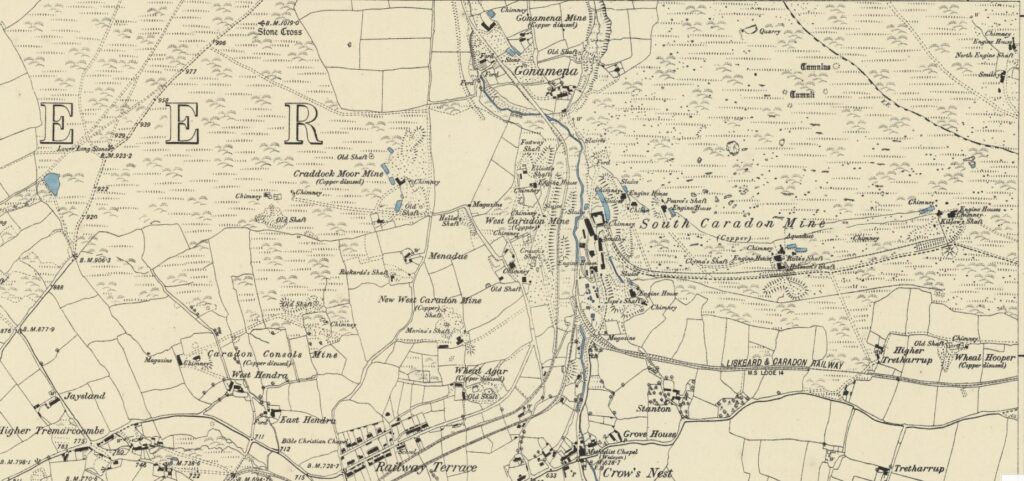
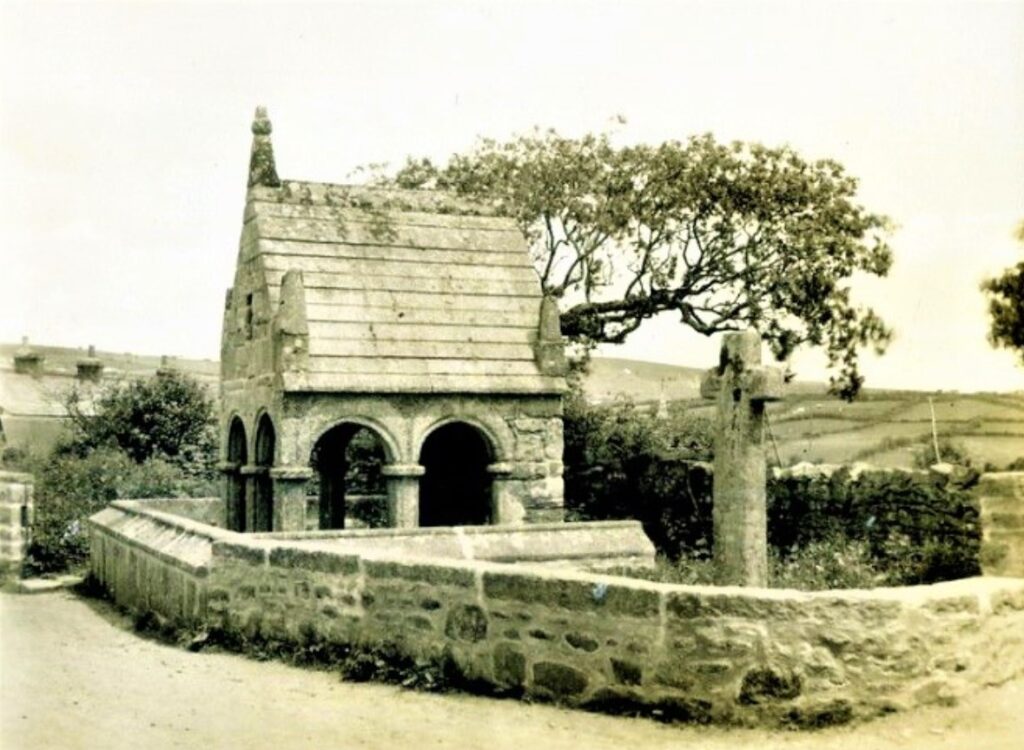
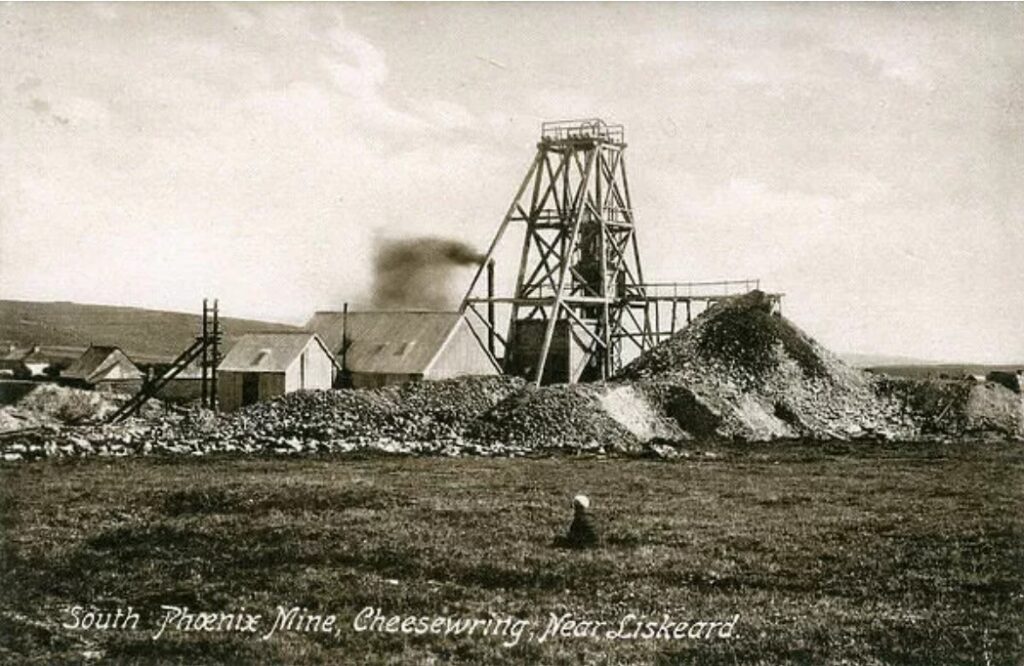
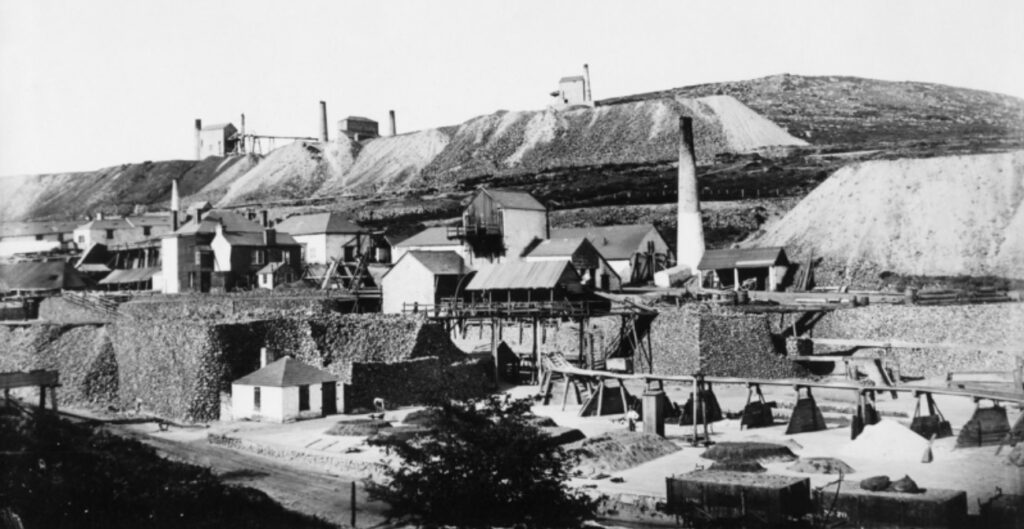
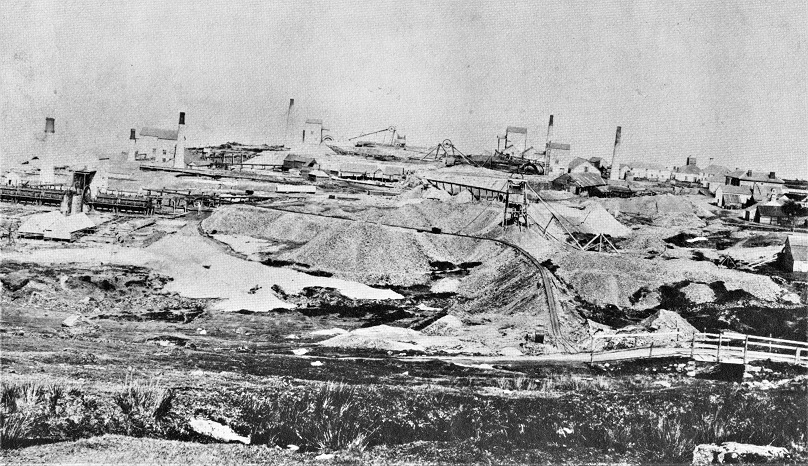
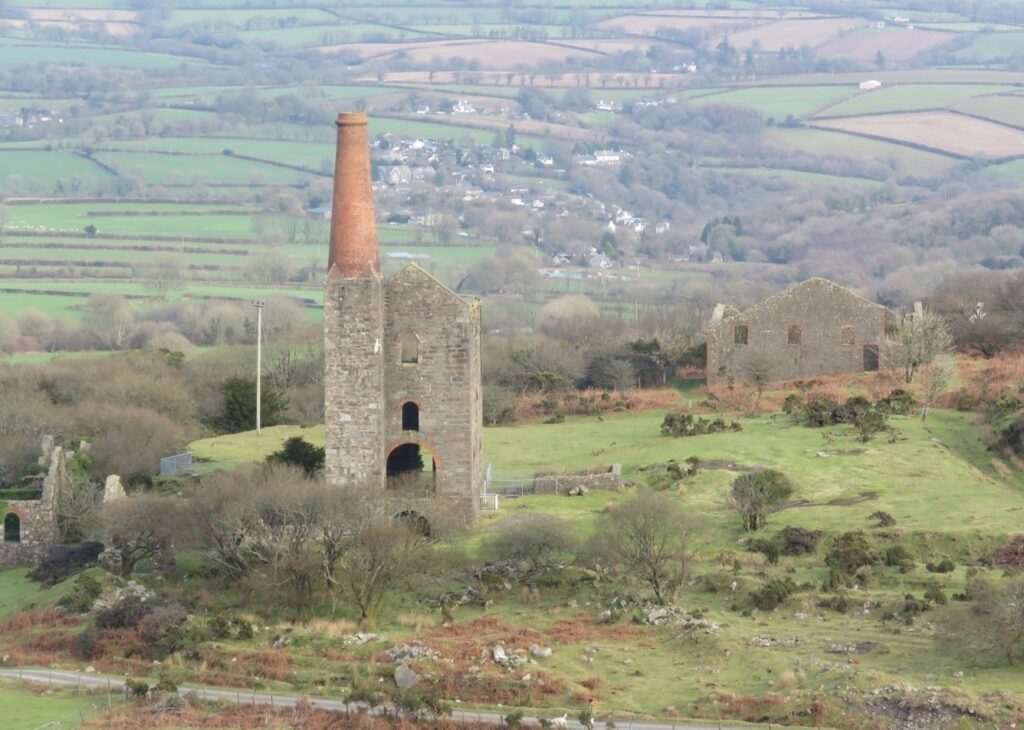
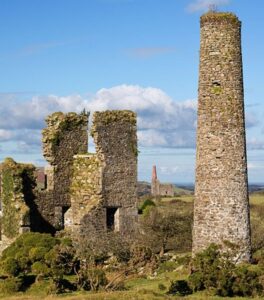
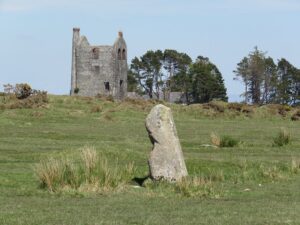
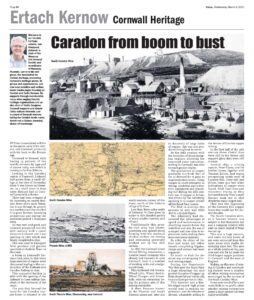
![Ertach Kernow - 08.03.2023 Caradon boom to bust [2] Caradon boom to bust](https://www.cornwallheritage.com/wp-content/uploads/2023/03/Ertach-Kernow-08.03.2023-Caradon-boom-to-bust-2-254x300.jpg)
![[141] Ertach Kernow Heritage Column - 8th March 2023 - Car parking fees hollowing out towns Ertach Kernow Heritage Column - 8th March 2023 - Car parking fees hollowing out towns](https://www.cornwallheritage.com/wp-content/uploads/2023/03/141-Ertach-Kernow-Heritage-Column-8th-March-2023-Car-parking-fees-hollowing-out-towns-300x284.jpg)